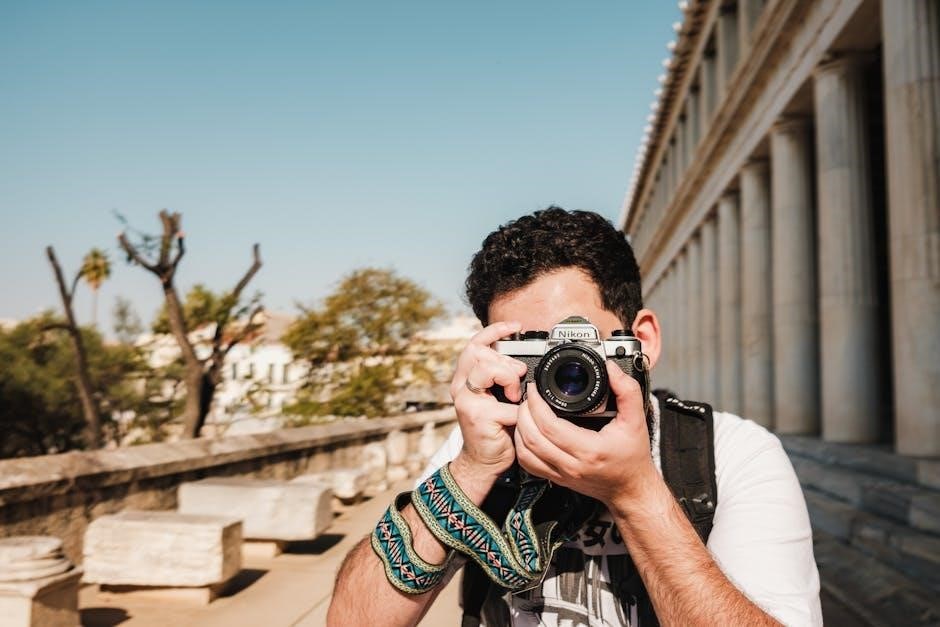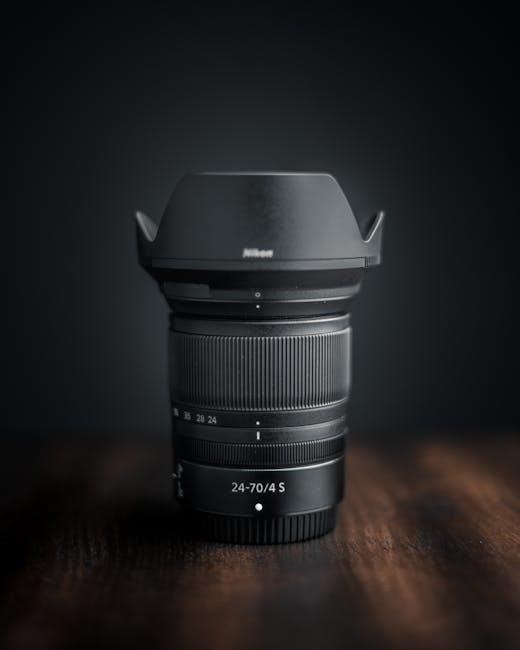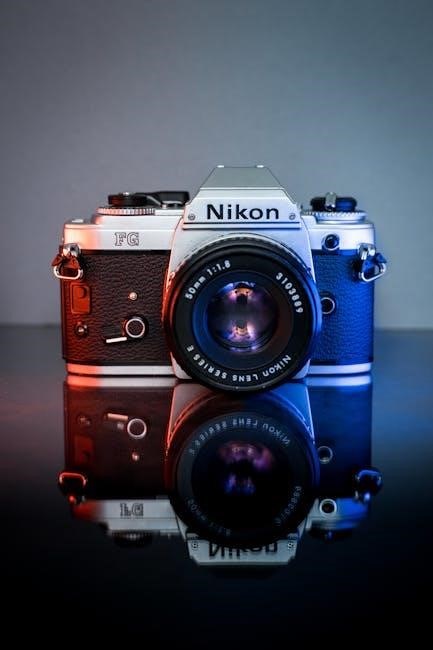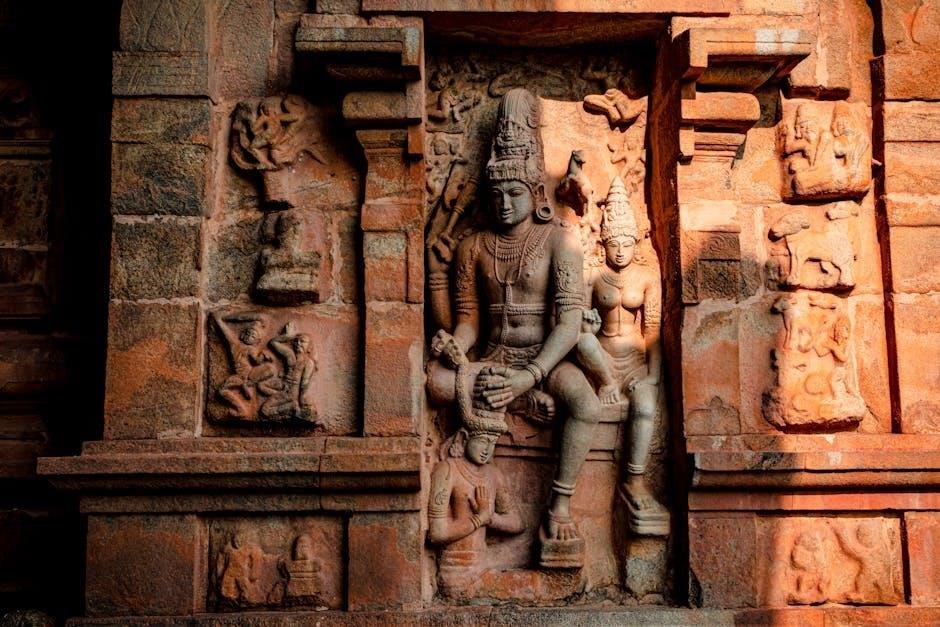Nikon D300 Manual English: A Comprehensive Guide
Welcome to the ultimate guide for your Nikon D300! This resource will help you master every feature. Explore settings and unlock the camera’s full potential, from basic operations to advanced techniques, ensuring stunning images every time.
The Nikon D300, a celebrated DSLR, continues to be a favorite among photography enthusiasts. Released as a high-performance camera, it combines robust build quality with advanced features. Its 12.3-megapixel sensor and rapid shooting capabilities of up to eight frames per second with the MB-D10 battery pack make it versatile.
This guide provides a detailed exploration of the D300’s functionality, from basic operations to advanced techniques. We’ll delve into its key features, including Active D-Lighting, which optimizes dynamic range, and its various shooting modes. Whether you’re a beginner or an experienced photographer, this manual aims to enhance your understanding and skills.
Furthermore, this guide covers troubleshooting common issues and maintaining your camera for longevity. Explore custom settings for personalized shooting experiences. Learn about image formats like JPEG, TIFF, and RAW to maximize image quality. By the end, you’ll confidently harness the full potential of your Nikon D300.
Understanding the Camera’s Features
The Nikon D300 boasts a range of features designed to cater to both amateur and professional photographers. Central to its appeal is the 12.3-megapixel DX-format CMOS sensor, delivering images with rich detail and clarity. The camera’s advanced 51-point autofocus system ensures sharp focus across the frame, making it ideal for capturing dynamic scenes.
Another prominent feature is the Active D-Lighting, which intelligently optimizes image contrast in high-contrast situations, preserving details in both highlights and shadows. The D300 also offers a continuous shooting speed of six frames per second, expandable to eight with the optional MB-D10 multi-power battery pack, perfect for action photography.
The camera’s intuitive menu system allows easy access to various settings, including image quality, white balance, and ISO. Understanding these features is crucial for maximizing the D300’s capabilities and achieving desired results. This section will guide you through each feature, explaining its function and how to effectively utilize it.

Key Features and Settings
Delve into the core functionalities of your Nikon D300; Master essential settings that define your photography. Discover features like Active D-Lighting and explore diverse shooting modes to elevate your skills and capture stunning images.
Active D-Lighting Explained
Active D-Lighting is a powerful feature in your Nikon D300 designed to optimize images with high contrast. It functions by analyzing the scene and intelligently adjusting the exposure to preserve details in both shadows and highlights. This results in photos with a wider dynamic range, closer to what the human eye perceives.
When enabled, Active D-Lighting automatically brightens darker areas while preventing overexposure in brighter regions. This is particularly useful in situations where there’s a significant difference in light intensity, such as landscapes with a bright sky and shadowed foreground or portraits taken in harsh sunlight.
The D300 offers different levels of Active D-Lighting, allowing you to customize the effect to suit your specific needs. You can choose from settings like “Low,” “Normal,” “High,” and “Extra High,” or even set it to “Auto,” where the camera automatically determines the optimal level based on the scene. Experimenting with these settings is key to understanding how Active D-Lighting impacts your images.
Remember that while Active D-Lighting can significantly improve image quality, it may also slightly increase processing time and noise levels, especially at higher ISO settings. Consider these factors when deciding whether to use this feature.
Shooting Modes and When to Use Them
The Nikon D300 offers a range of shooting modes, each designed for specific photographic situations. Understanding these modes is crucial for capturing the best possible images.
Program (P) mode allows the camera to automatically set the aperture and shutter speed, while you retain control over other settings like ISO and white balance. This is ideal for general photography when you need a balance of automation and control.
Shutter-priority (S) mode lets you select the shutter speed, and the camera automatically adjusts the aperture. Use this for capturing motion, like freezing a fast-moving subject with a high shutter speed or creating motion blur with a slower speed.
Aperture-priority (A) mode allows you to choose the aperture, and the camera sets the shutter speed. This is perfect for controlling depth of field, creating a shallow focus for portraits or a wide focus for landscapes.
Manual (M) mode gives you complete control over both aperture and shutter speed. This is best for situations where you need precise control over exposure, such as studio photography or shooting in challenging lighting conditions. Experiment with each mode to see what suits you best.
Focusing Options: Manual vs. Auto
The Nikon D300 provides both manual (MF) and autofocus (AF) options, each with its advantages. Mastering both is key to capturing sharp images in various scenarios.
Autofocus (AF) uses the camera’s internal system to automatically focus on the subject. The D300 offers various AF modes, including single-servo (AF-S) for stationary subjects and continuous-servo (AF-C) for moving subjects. Selecting the appropriate AF area mode, such as single-point or dynamic-area, further refines the focusing process.
Manual Focus (MF) requires you to adjust the lens’s focus ring until the subject appears sharp in the viewfinder. This is particularly useful in low-light conditions, when shooting through obstructions, or when precise focus is needed on a specific point. Enable the focus confirmation indicator within the viewfinder to aid manual focusing.
When deciding between AF and MF, consider the subject’s movement and the shooting conditions. AF is generally faster and more convenient for moving subjects, while MF offers greater precision and control in challenging situations. Practice with both to develop your skills.

Advanced Techniques
Ready to elevate your Nikon D300 photography? Explore custom settings for personalization, master advanced focusing, and understand image formats to unlock the camera’s full potential. Dive into creative possibilities and refine your skills.
Custom Settings and Personalization
The Nikon D300 offers extensive customization, allowing photographers to tailor the camera’s behavior to their specific needs and shooting styles. Diving into the custom settings menu unlocks a world of possibilities, enabling you to fine-tune various parameters to optimize performance for different scenarios.
One key area for personalization is adjusting the autofocus system. You can modify focus tracking sensitivity, allowing the camera to react differently to subject movement. Experiment with different settings to find what works best for your subject matter, whether it’s fast-paced action or stationary portraits.
Another important customization option is bracketing. The D300 supports auto bracketing, which lets you capture a series of images with varying exposure levels. This is invaluable for high-contrast scenes where capturing detail in both shadows and highlights is challenging. Customize the bracketing range and step size to suit your needs.
Furthermore, explore the options for customizing the camera’s buttons and dials. Assign frequently used functions to easily accessible controls, streamlining your workflow and allowing for quicker adjustments in the field. Take time to experiment and discover the settings that best complement your shooting style.
Using the MB-D10 Multi-Power Battery Pack
The MB-D10 Multi-Power Battery Pack is an optional accessory that enhances the Nikon D300’s capabilities. It provides extended battery life, enabling longer shooting sessions without interruption. The grip accommodates either one EN-EL3e battery or eight AA-size batteries, offering flexibility in power sources.
Beyond extended power, the MB-D10 offers improved ergonomics, especially for vertical shooting. The grip features a secondary shutter release button, as well as command dials, placed for comfortable operation when holding the camera in a portrait orientation. This makes shooting vertical images more intuitive and stable.
When using AA batteries, it’s recommended to use high-quality rechargeable Ni-MH batteries for optimal performance. Alkaline batteries can be used, but their lifespan will be significantly shorter. Remember to set the battery type in the camera’s menu to ensure accurate battery level readings.
Attaching the MB-D10 is straightforward. Simply remove the battery chamber cover on the D300 and slide the grip into place, securing it with the locking mechanism. Once attached, the camera will automatically recognize the grip and display the appropriate battery information. The increased grip size also provides a more substantial feel in hand.
Understanding Image Formats: JPEG, TIFF, RAW
The Nikon D300 offers three primary image formats: JPEG, TIFF, and RAW, each serving different purposes and offering varying degrees of image quality and file size. Understanding the nuances of each format is crucial for maximizing your photographic workflow.
JPEG (Joint Photographic Experts Group) is a compressed format that balances image quality and file size. It’s ideal for everyday shooting, sharing images online, and situations where storage space is a concern. However, the compression process can lead to some loss of detail, particularly when heavily edited.
TIFF (Tagged Image File Format) is an uncompressed format that preserves all the image data captured by the sensor. This results in larger file sizes but offers the highest possible image quality and is suitable for professional printing and archiving. TIFF files retain all the original detail, making them ideal for extensive editing.
RAW files, specific to Nikon (NEF), contain unprocessed data directly from the camera’s sensor; These files offer the greatest flexibility for post-processing, allowing you to adjust white balance, exposure, and other settings without permanently altering the original image data. RAW files require specialized software for viewing and editing.

Troubleshooting and Maintenance
This section provides guidance for resolving common issues encountered with your Nikon D300. Learn preventative measures to keep your camera in optimal condition. Proper care ensures longevity and consistent performance.
Common Problems and Solutions
Encountering issues with your Nikon D300? This section addresses frequent problems and offers practical solutions. One common problem is blurry images. Ensure your shutter speed is appropriate for the subject. Also, check your focus settings. If your images appear too dark or bright, examine your exposure settings. Adjust the aperture, shutter speed, or ISO accordingly.
Another issue is error messages on the LCD screen. Consult your manual to identify the specific error and its recommended solution. Corrupted memory cards can also lead to problems. Try a different card or format the existing one. If the camera freezes, remove the battery and reinsert it.
Dust on the sensor can cause spots in your photos. Use a blower to carefully clean the sensor or seek professional cleaning. Finally, if your autofocus is not working, ensure the lens switch is set to AF. These simple fixes can solve most issues.
Care and Cleaning of Your D300
Proper care and cleaning are essential to prolong the life of your Nikon D300. Start by keeping the camera in a dry, dust-free environment. When not in use, store it in a camera bag. For cleaning the exterior, use a soft, dry cloth to wipe away dirt and fingerprints. Avoid using solvents or harsh chemicals.
To clean the lens, use a lens brush to remove loose particles; Follow up with a microfiber cloth designed for lenses. Use a circular motion, applying gentle pressure. Never use excessive force. For the camera’s sensor, cleaning should be done with caution. Use a blower to remove dust. If spots persist, seek professional sensor cleaning.
Regularly inspect the battery contacts for corrosion. Clean them with a dry cloth if necessary. Always remove the battery when storing the camera for extended periods. These simple steps will keep your D300 in optimal condition.

Specifications
Explore the detailed specifications of the Nikon D300. This section provides an overview of its key features, including sensor details, image formats, and connectivity options. Understand its capabilities for optimal performance.
D300 Specifications Overview
The Nikon D300 boasts a 12.3-megapixel DX-format CMOS sensor, delivering exceptional image quality and detail. Its ISO range extends from 200 to 3200, expandable to 100-6400, ensuring excellent low-light performance. The camera features a robust autofocus system with 51 focus points, providing precise and reliable subject tracking.
It captures images in JPEG, TIFF, and RAW formats, offering flexibility in post-processing. The D300 supports CompactFlash memory cards for storage and includes USB 2.0, video, and HDMI interfaces for connectivity. With a continuous shooting speed of 6 frames per second (up to 8 fps with the MB-D10 battery pack), it’s well-suited for action photography.
Manual focus is supported, allowing for precise control. The camera’s durable build and comprehensive feature set make it a favorite among enthusiasts and professionals. These specifications highlight the D300’s capabilities as a versatile and high-performing DSLR.

